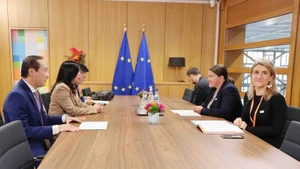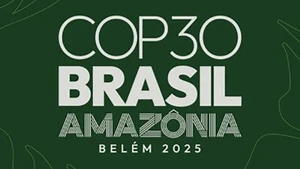The Korean government is taking aggressive measures to restore growth.
In its December economic trends, KDI’s analysis indicates that “While sluggish exports became visible due to the global economic slowdown, interest rate hikes have continued, worsening the sentiment index of households and businesses.”
Statistics on industrial production and exports in recent months show that the Korean economy is growing weakly. The Korean National Bureau of Statistics announced that industrial production in October decreased by 1.5% compared to September, the deepest decline in the 30 months since April 2020, when the outbreak of the COVID-19 pandemic began.
Statistics show that Korea's consumer sector has also stagnated. After a successful rebound in August, retail sales fell 0.2% this month. Meanwhile, the Ministry of Trade, industry and Energy of the Republic of Korea (RoK) has just announced that exports from the RoK plunged 14% from last year to 51.9 billion USD in November 2022.
This year, the RoK's exports have maintained their growth momentum through September but turned to a downward trend in October. This is the second straight month of decline due to global economic stagnation.
Regarding the financial sector, KDI experts are concerned that the short-term capital market of Korea remains unstable, although market interest rates have fallen and stock prices have increased thanks to the expectation of reductions in domestic and foreign key interest rates.
Korean experts said that the economy was under greater pressure in the second half of the year due to the tightening of monetary policies of major countries, China's Zero Covid policy, and prolonged tension on the Korean peninsula.
Facing the above challenges, the Korean Government is taking drastic measures to stabilise finance, attract foreign investment capital and improve the labour market in order to revive economic growth.
At the final interest rate decision meeting in 2022, the Bank of Korea's (BOK) monetary policy committee decided to raise the base rate further by 0.25%. This is the first time in history that the BOK raised interest rates 6 times in a row. Accordingly, the basic interest rate of the RoK increased to 3.25% per year. The decision to raise this interest rate is aimed at stabilising consumer prices, in the context that consumer prices increased by 5.7% in October, remaining at a high threshold.
In addition, the Korean government is also actively attracting foreign direct investment to create more economic growth. According to KBS, the RoK will ease regulations on the import of electric vehicles, chemical substances and other items in an effort to attract more foreign investment to the country. These are among the 40 major measures that the government has devised to revamp imports and investment rules.
During the first nine months of this year, foreign direct investment pledges to the RoK hit an all-time high of 21.52 billion USD on the back of solid growth in investment in advanced sectors such as chips and batteries, government data showed.
In addition, the RoK has also made efforts to take measures to open the economy while at the same time fighting the COVID-19 epidemic. Accordingly, the labour market has improved significantly.
Some recent positive signals show that RoK's economy seems to have begun to see some "light at the end of the tunnel" as service industry production is continuing to increase and the investment situation is improving. However, these small bright spots still cannot guarantee a brighter economic picture for Korea in 2023.
















